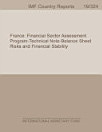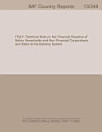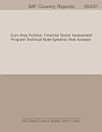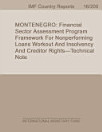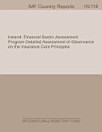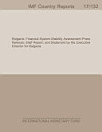Georgia: Financial Sector Assessment Program-Stress Testing the Banking Sector-Technical Note
International Monetary Fund. Monetary and Capital Markets Department
Jan 2015 · International Monetary Fund
Ebook
62
Pages
reportRatings and reviews aren’t verified Learn More
About this ebook
The Georgian banking sector is sound and stable and has continued to perform well, but faces a number of key risks and vulnerabilities that need to be closely monitored. Particularly challenging among them are credit and funding risks related to dollarization, concentration in the banking sector, and reliance on nonresident deposits. While NPLs are gradually declining from their peak in 2009, credit growth is above its long-term sustainable trend. Dollarization presents specific challenges as it increases credit and liquidity risks. There are two major dollarization-related problems: First, most of the borrowers in U.S. dollars (USD) are unhedged, as their income and expenditures are in national currency (this is especially evident in case of households). Second, the NBG has limited ability to provide liquidity support in USD and other foreign currencies. However, it should be noted that the NBG is implementing a set of macroprudential measures aimed at making FX lending more expensive for banks. For example, current risk weights for FX loans are topped at 175 percent. Separate stress tests (STs) performed by the NBG and by the FSAP mission show that the banking system as a whole is able to withstand severe shocks, given that most banks maintain healthy capital buffers well above regulatory minimum. The tests were conducted in several scenarios ranging from slow growth to severe macroeconomic shocks, and the results show that major banks would generally remain adequately capitalized, taking into account current profits and introduction of Basel II. In adverse scenarios, recapitalization needs are manageable in terms of GDP (1.6 percent for the worst-case scenario). At the same time, uncertainty due to non-linearity of shocks related to lari depreciation warrant continuation of build-up of capital buffers as long as FX denominated loans constitute substantial share of banks’ loan portfolios. Credit portfolio concentration risks are limited: default by the largest three borrowers would require additional capital of GEL 50 million for five banks. Market risks are very limited, and trading books do not exist. However, some banks are particularly vulnerable and need to strengthen their capital buffers and to mitigate funding risks. These banks exceed the minimum capital requirement by only a few percentage points (p.p.), which limits their loss-absorption capacity. The high level of profitability and solid net interest margins would go down during crisis periods, driving down net interest and other income. To avoid this pitfall, it is important to introduce Individual Capital Guidance, especially for the weakest banks. When it comes to funding risks, further diversification of funding sources and de-dollarization could help to minimize identified vulnerabilities.
Rate this ebook
Tell us what you think.
Reading information
Smartphones and tablets
Install the Google Play Books app for Android and iPad/iPhone. It syncs automatically with your account and allows you to read online or offline wherever you are.
Laptops and computers
You can listen to audiobooks purchased on Google Play using your computer's web browser.
eReaders and other devices
To read on e-ink devices like Kobo eReaders, you'll need to download a file and transfer it to your device. Follow the detailed Help Center instructions to transfer the files to supported eReaders.

